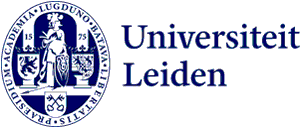
Inclusive Leadership in the Public Sector
What factors play a role in determining inclusive leadership in public organisations? On Friday June 4, dr. Tanachia Ashikali answered this question as she shared the findings from her recent research on inclusive leadership with various academics and professionals.
In order to enhance the responsiveness and representation with regard to a diverse and changing society, public organisations increasingly seek to foster an inclusive work environment. Previous studies have shown that inclusive leadership is crucial to develop such an inclusive environment. However, academic knowledge on what determines inclusive leadership is still limited. Therefore, in 2019 dr. Tanachia Ashikali received a grant from the Leiden University Fund (LUF) to conduct an in-depth study into the determinants of inclusive leadership in public organisations: What does it take to be an inclusive leader? Unravelling determinants of inclusive leadership in public organizations.
What factors support inclusive leadership?
Both personal as well as organisational antecedents determine inclusive leadership. The following factors play a crucial role in inclusive leadership:
- Leader Humility: Humility enhances inclusive leadership. A humble leader is self-aware, open to the ideas of others, puts the team first and appreciates the qualities of team members.
- Perspective on diversity: The motive of organisations and leaders to value and stimulate diversity and inclusion. A focus on creating equal opportunities and integrating & learning has a positive effect on inclusive leadership.
- Organisational culture: Leaders experience various aspects of the organisational culture. The culture types range from a focus on stability and flexibility, and an internal and external focus. A group culture with an internal and flexible focus on teamwork, participation and personal development encourages inclusive leadership.
Moreover, leaders with an intrinsic motivation for diversity and inclusion will use their discretionary room to move beyond impeding factors in the organisational context, such as a hierarchical culture, rules, and procedures. Moreover, top leaders are crucial for developing a culture in which inclusive leadership is stimulated among middle and team managers.
Reflection
Although the obtained insights provide a better picture of the determinants of inclusive leadership, current developments also raise new obstacles. One of the impediments experienced by both leaders and team members is the fact that teams become larger in scale and leaders are placed in a more distant position. In addition, the Covid-crisis has also caused more distance between team members and leaders, possibly limiting the impact of inclusive leadership and experiences of inclusivity.
